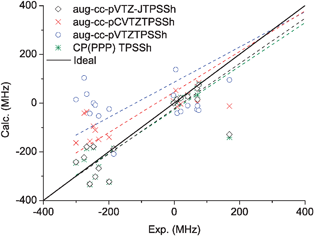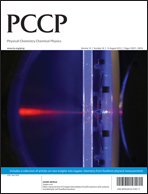Calculation of hyperfine coupling constants (HFCs) of Electron Paramagnetic Resonance from first principles can be a beneficial complement to experimental data in cases where the molecular structure is unknown. We have recently investigated basis set convergence of HFCs in d-block complexes and obtained a set of basis functions for the elements Sc–Zn, which were saturated with respect to both the Fermi contact and spin-dipolar components of the hyperfine coupling tensor [Hedegård et al., J. Chem. Theory Comput., 2011, 7, 4077–4087]. Furthermore, a contraction scheme was proposed leading to very accurate, yet efficient basis sets for the elements Sc–Zn. Here this scheme is tested against a larger test set of molecules and a wider range of DFT functionals. We further investigate the regular aug-cc-pVTZ and core–valence correlation aug-cc-pCVTZ basis sets as well as another core-property basis set, CP(PPP). While aug-cc-pVTZ-J provides hyperfine coupling constants that are almost identical to the converged series (aug-cc-pVTZ-Juc), we observe that not only the regular but also the core–valence correlation basis sets provide results far from the converged results. The usage of specialized core-basis sets leads to a large and highly significant improvement of the calculated hyperfine couplings in comparison with experimental data.

You have access to this article
 Please wait while we load your content...
Something went wrong. Try again?
Please wait while we load your content...
Something went wrong. Try again?


 Please wait while we load your content...
Please wait while we load your content...